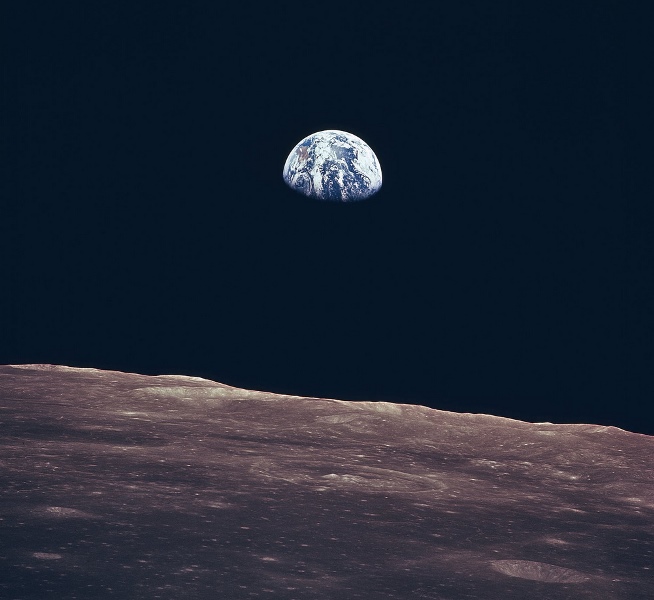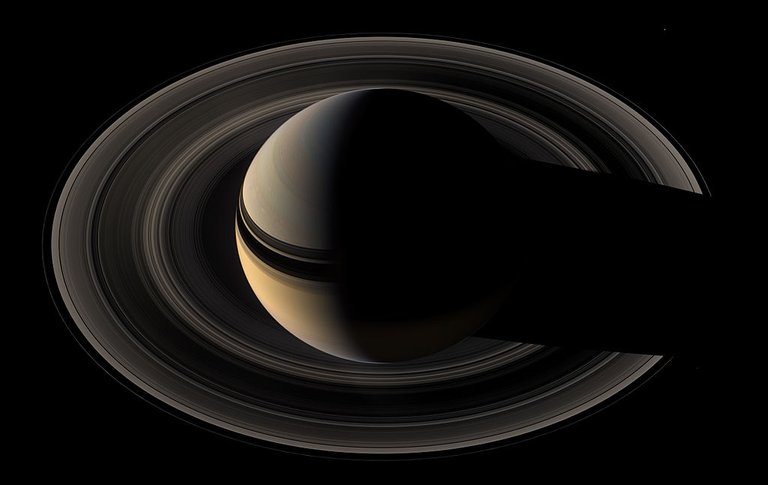We know that climate change is a real threat to our existence, and efforts to limit the use of fossil fuels, the main source of greenhouse gas generation, have been ineffective, so the trapping of solar rays by our atmosphere is a serious problem that continues to increase. This has prompted the scientific community to explore different alternatives to limit global warming, one alternative being to intercept solar radiation before it reaches the Earth, for which a group of scientists have evaluated the use of lunar dust.

Scientists evaluate using lunar dust to shield Earth from radiation. Source: Picryl.com.
The proposal is based on the idea of using aerosols to attenuate solar radiation, since in the Earth's atmosphere, aerosols serve as a reflector or adsorbent that distribute solar radiation, the problem is that their overall impact is difficult to quantify due to uncertainties such as their interaction with clouds or how they can be distributed. This would generate unequal benefits for the population or perhaps even worse long-term environmental effects.
However, there are approaches based on placing objects in space that serve to shade the Earth, such as a screen or a swarm of satellites, which may offer an alternative that does not interfere with other factors in the atmosphere. But this approach has its own challenges, such as being able to maintain an orbit at an exact point between the Earth and the Sun, or carrying a lot of cargo into space.
But other strategies for shadowing the Earth from space have been mooted, and some alternatives propose using dust instead of large objects, as micrometer-sized dust clouds at Lagrange points from the Earth to the Moon have shown promise. Lagrange points (also called L-points) are five positions in an orbital system where gravitational attractions balance, and theoretically an object could be stationary relative to two larger objects. And a proposal recently made by a group of scientists, published in the journal Plos Climate, involves using lunar dust.

Schematic showing the five Lagrangian points in the Sun-Earth system. Source: Wikipedia.com.
The study led by scientists at the University of Utah, USA, concluded that it is possible to shield solar radiation by scattering lunar dust in space to mitigate global warming.
A particle orbiting the Sun can shield the Earth by absorbing or scattering radiation. The overall effectiveness of a shield depends on its ability to maintain an orbit that casts a shadow on the Earth. In principle, a small shield placed at L1 can remain in close alignment between the Earth and the Sun, which offers the hope that it can provide a constant solar shadow.
The idea arose with the consideration that a lot of dust is produced during planet formation, and dust particles in orbit around a star can shield planets by absorbing or scattering solar radiation. So, if we could be able to take a certain amount of lunar dust and put it in orbit between the Earth and the Sun, we could block a lot of solar radiation from entering the Earth.

The idea came from observing how the dust rings absorb solar radiation. Source: Wikipedia.org.
But the effectiveness of this shield depends on its ability to maintain an orbit that casts a shadow on Earth. The researchers analyzed several scenarios for simulations, in one they explored placing a space platform at Lagrange 1, the closest point to Earth. In the simulation of this scenario, firing dust particles from L1, they determined that at least for a time they would create a shadow on Earth, but solar winds and the solar system's gravity would soon deflect the dust trajectory, which would require constantly firing batches of dust from this position.
In another scenario, the researchers evaluated firing dust from the Moon toward the Sun, and through simulations determined that the dust would disperse in various paths until it found trajectories directed toward L1 that served as an efficient screen.
Although the calculations appear sound there are several limitations, the researchers only evaluated the ability of the lunar dust to provide a shield against solar radiation, not all the engineering and effort required to carry out such a mission.
On the other hand, I do not agree with this type of plans that seek a way to solve the climate crisis without suggesting a change in our current pattern of energy consumption, it is like seeking to give us more time to continue burning fossil fuels instead of developing technologies to replace them.
References
Bromley BC, Khan SH, Kenyon SJ (2023) Dust as a solar shield. PLOS Climate, Published: February 8, 2023




